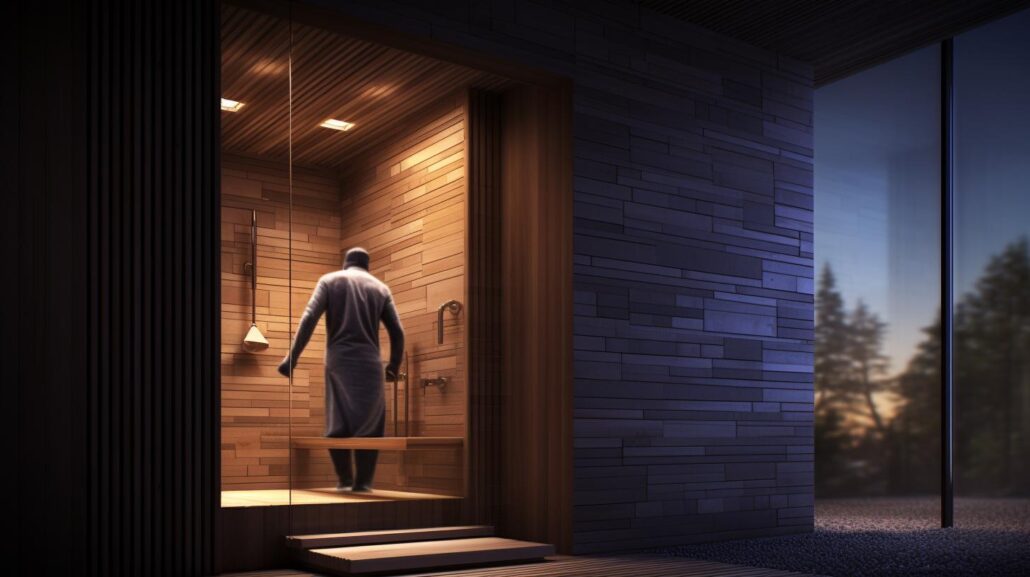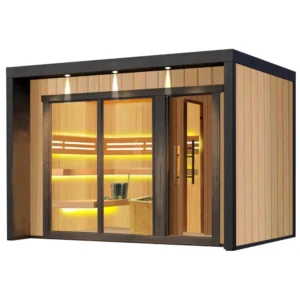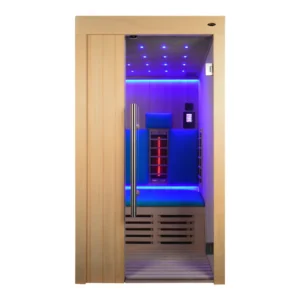Are you curious about the different types of saunas and their unique benefits? From traditional steam rooms to modern infrared cabins, the world of saunas can be a little steamy! This article will guide you through the most popular types, explaining how they work and what makes each one special. Whether you’re looking for relaxation, muscle recovery, or overall wellness, understanding the key differences will help you choose the best heater and maximize the benefits of your sauna sessions. Let’s dive in to discover which sauna might be the most effective for you!
Main Types of Saunas: Traditional vs. Modern Options
Saunas generally fall into two categories: traditional and modern. The key difference lies in how the heater generates heat.
Traditional Saunas: Also known as Finnish or steam saunas, these use a sauna heater to warm the air. The heat is then transferred to your body. These heaters can be wood-burning or electric, and heat stones that radiate warmth. You can also add water to the stones to create steam, increasing humidity and intensity, which creates a more classic sauna experience.
Infrared Saunas: A more modern approach, infrared saunas use heaters that emit infrared light waves to warm your body directly. This form of heat penetrates deeper, warming the body from the inside out. Infrared saunas typically operate at lower air temperatures than traditional ones, making them a more comfortable option for some.
Choosing the Right Sauna for You: Both sauna types offer unique benefits. The best sauna depends on your personal preferences, goals, and desired effects.
How They Heat: Traditional vs. Infrared Saunas
Traditional Saunas: The sauna heater warms the air to high temperatures, usually between 150°F to 195°F (65°C to 90°C). This hot air heats your body from the outside. Humidity levels can be adjusted by adding water to the stones, creating a more intense heat experience.
Infrared Saunas: Infrared saunas use infrared radiant heat, which directly warms objects and people without significantly heating the surrounding air. The air temperature is usually lower, between 120°F to 140°F (49°C to 60°C), making it a more comfortable experience for some.
This difference in heat delivery leads to varying physiological effects, and it’s essential to consider how each type makes you feel during and after the session.

Health Benefits of Traditional Saunas
Detoxification and Cardiovascular Health: The high heat of a traditional sauna induces sweating, which can help flush out toxins from your body. It also increases heart rate and improves circulation, mimicking the effects of moderate exercise.
Muscle Relaxation and Stress Relief: Many sauna users report muscle relaxation and relief from tension. The soothing heat can help athletes and individuals with sore muscles recover faster. It also provides stress relief and can improve sleep quality.
Breathing and Respiratory Benefits: The warmth can open up your airways, potentially helping with respiratory conditions such as congestion or asthma.
Health Benefits of Infrared Saunas
Pain Relief and Muscle Recovery: Infrared saunas are well-known for their potential benefits in reducing muscle pain and inflammation. The infrared heat penetrates deeper into the skin, which is why many athletes prefer this sauna for recovery.
Improved Circulation and Detoxification: The gentle heat encourages blood flow and aids in the release of toxins stored in fat cells. Although studies are ongoing, many users find infrared therapy effective for various health conditions.
Comfortable Heat: The lower air temperature makes infrared saunas more comfortable for individuals who cannot tolerate the intense heat of traditional saunas.
Indoor vs. Outdoor Saunas: Location Matters
The location of your sauna can influence your experience.
Indoor Saunas: These offer convenience and privacy, making them ideal for home gyms or bathrooms. The environment is controlled, and the sauna temperature and humidity remain consistent. Installation is often simpler, especially with pre-fabricated models.
Outdoor Saunas: Outdoor saunas, such as barrel saunas, allow you to enjoy a unique connection with nature. The ritual of heating a wood-burning sauna and stepping into fresh air is invigorating. Outdoor saunas are visually appealing, especially when made from attractive materials like cedar. However, they can take longer to heat up, especially in colder climates.
For example, this outdoor sauna factory-OS3123 is a great example of a beautiful and functional outdoor option.

Electric vs. Wood-Burning Saunas: Which Heater Suits You?
Electric Saunas: Known for convenience, electric saunas are easy to use with simple on/off controls. They provide consistent heat and require less maintenance than wood-burning saunas.
Wood-Burning Saunas: Offering a traditional experience, wood-burning saunas provide a more rustic ambiance with the crackling sound of fire. They reach higher temperatures and produce a drier heat. However, they require more work, such as sourcing wood and monitoring the fire for temperature control.
Far Infrared Saunas: A Deeper Heat
Far infrared saunas utilize longer infrared wavelengths that penetrate deeper into the skin, providing enhanced therapeutic benefits. This type of infrared heat is believed to be especially effective for detoxification and pain relief. If you are considering an infrared sauna, be sure to ask whether it uses far infrared technology for the most specific therapeutic benefits.
You can find examples of these, like this far infrared sauna room China-IFL-2102A.

Barrel Saunas: What’s Unique About Their Design?
A barrel sauna stands out for its cylindrical design. The shape promotes even heat circulation, ensuring that warmth is distributed evenly throughout the space. The reduced surface area allows for quicker and more efficient heating, saving on energy costs. Barrel saunas are also aesthetically pleasing and easy to install in outdoor spaces.
Consider options like this garden sauna suppliers-OS3121 for a beautiful addition to your outdoor space.
Choosing the Right Sauna: Key Factors
When selecting the right sauna, consider the following factors:
- Budget: Infrared saunas and electric models tend to be more affordable compared to traditional or custom-built outdoor saunas.
- Space: Indoor saunas require dedicated room, while outdoor saunas need ample yard space.
- Experience: Do you prefer intense heat or gentler warmth? Think about your health goals—detoxification, muscle recovery, or relaxation—and choose the sauna that aligns with those.
- Maintenance: Electric saunas are easier to maintain than wood-burning saunas, which require regular fire management.
Summary: What’s the Best Sauna for You?
- Traditional Saunas: High heat and humidity, great for detoxification and cardiovascular health.
- Infrared Saunas: Lower temperatures with deeper heat penetration, ideal for muscle recovery and pain relief.
- Far Infrared Saunas: Focus on deep heat for enhanced therapeutic benefits.
- Electric Saunas: Convenient and easy to maintain.
- Wood-Burning Saunas: Traditional experience with higher temperatures.
- Indoor vs. Outdoor Saunas: Consider your available space and desired experience.
If you’re unsure about which sauna is best for you, check out our
sauna room manufacturer guide for personalized advice and recommendations. Let us help you create the perfect sauna experience tailored to your lifestyle. Reach out today and start your wellness journey with the perfect sauna!



